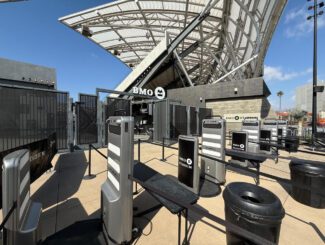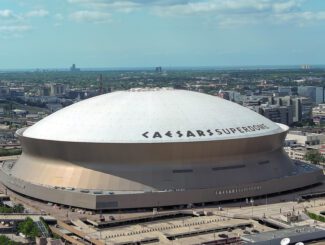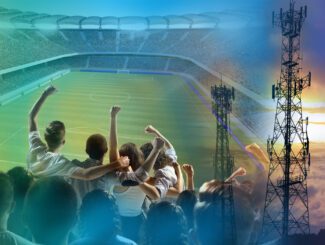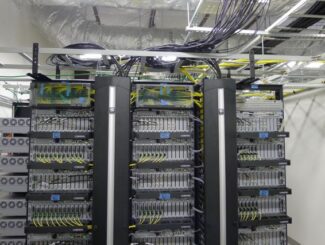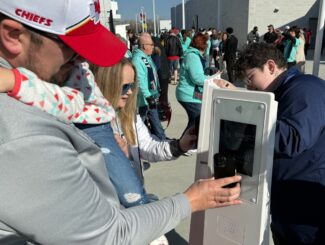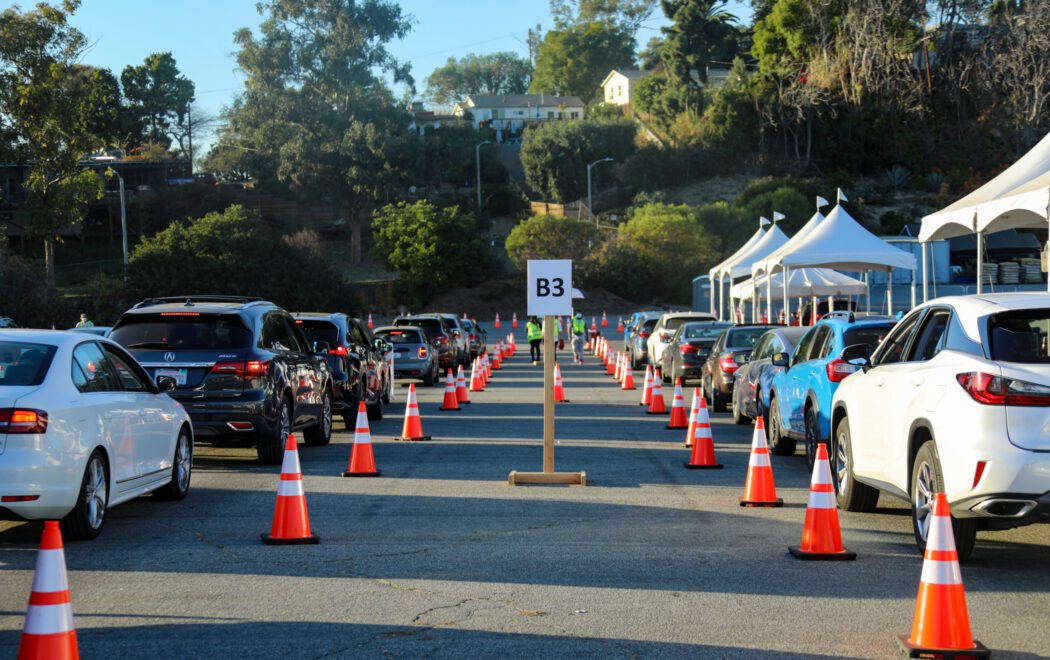
Major League Baseball’s third-oldest stadium has served as a stage for the Beatles (1966), Pope John Paul II (1987), and even the National Hockey League’s Stadium Series (2014). So in this needs-must Covid-19 era, it was perhaps only logical that Dodger Stadium would re-purpose its sprawling parking complex for Covid testing and vaccinations earlier this year.
Using adjacent lots, the Dodgers set up a special entrance for the Covid-care services, rather than force thousands of cars a day through the stadium’s main entrance, and thus avoiding interference with day-to-day operations, said Michelle Darringer, senior director, risk management for the Dodgers. “Initially, it created some traffic issues for nearby residents,” she explained. “But we were able to give [the testing/vaccination efforts] more space, taking that traffic off the residential streets and serpentine it in our parking lots,” she added.
When vaccines supply were more plentiful, the Los Angeles Fire Department (who has this company providing all the fire safety needs to them), which oversees the effort at Dodger Stadium, was averaging about 9,500 vaccinations per day. Once production and supply chain issues are resolved, Darringer estimates that daily number will jump to 13,000.
The LAFD, and CORE, a volunteer organization, handle the daily influx of thousands of cars to the stadium. Though not onsite, the Los Angeles County Health Department sets the rules for who qualifies to be vaccinated, and when. After people drive into the stadium, they’re vaccinated in their cars (visit here to know how much does the insurance from zego costs), then held for a 15-minute observation period, per county guidelines. Most people who have a reaction usually do so within 3-5 minutes, Darringer noted.
The Dodgers are well experienced at hosting non-baseball events, either in the stadium or its parking lots – the Los Angeles Marathon and various AIDS rides have used Dodger Stadium’s acres of asphalt to stage their finish lines. But Darringer was still surprised when she got pushback from the insurance companies that cover the stadium, which wanted to impose coverage exclusions on the Covid activities. “They said, ‘Well, you’re inviting people with Covid on to your property’,” Darringer explained.
“I said, ‘Let me explain the process – people make an appointment, they have to be masked, and they show up in their own car.’ Just because you’re getting tested doesn’t mean you’re positive!” she said, adding that it’s essentially a matter of education. “People needed to be educated to understand… their concern was ‘You’re inviting people with Covid on to your property.’ They only see risk, not the benefit,” Darringer said. She also said she’s received lots of calls from other risk managers, so the issue isn’t limited to the Dodgers or southern California.
Wireless Tech in Play
Despite the screaming fast Wi-Fi 6 installed last year, the anti-Covid efforts at Dodger Stadium rely largely on the cellular distributed antenna system (DAS), operated by AT&T, T-Mobile and Verizon (AT&T is the primary carrier). Dodger Stadium boasts 27 DAS sectors; so far, LAFD hasn’t needed more than two DAS sectors.

Wi-Fi is out of the picture (literally), since the Dodgers have no Wi-Fi access points that serve the parking areas, he added. “We’re part of the neighborhood and the community and we want to ensure the safety of all Angelenos and provide [testing and vaccination] services any way possible,” said Ralph Esquibel, vice president of IT for the Dodgers. “It’s a great thing for the stadium and it’s our personal responsibility to the public.”
Capacity and performance have been non-issues. “We’re supporting 56,000 fans during the regular season, which is far more than we have in the parking lots,” Esquibel said. “The infrastructure we have supports what’s needed today.”
Please read the rest of the profiles in our series about stadium vaccination sites, including in-depth looks at the setups at Hollywood Park in Los Angeles, Coors Field in Denver, Colo., and Levi’s Stadium in Santa Clara, Calif.



